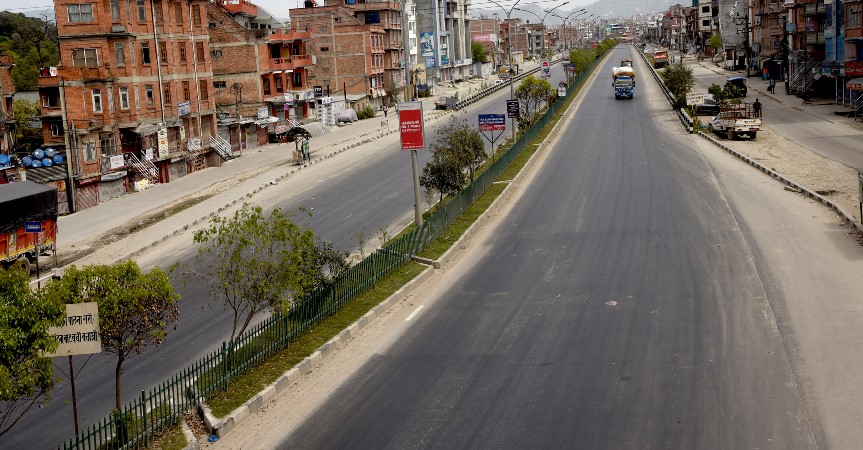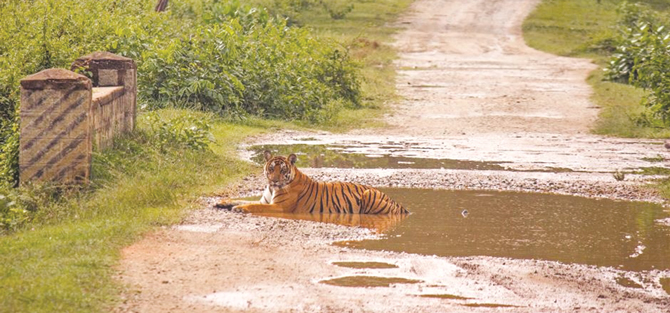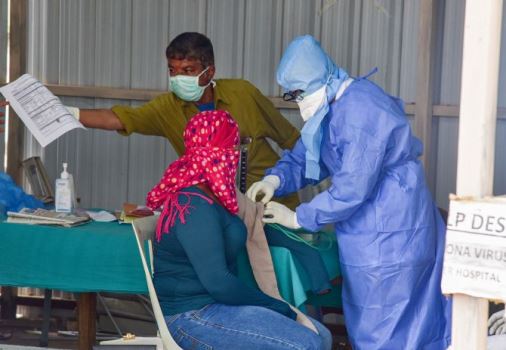Habitat degradation causing human-wildlife conflict

By Indira Aryal
Kathmandu, Aug. 29: Rising forest destruction and degradation has forced wildlife to live near human settlements, increasing the chances of human-wildlife conflict.
Leopard (Panthera Pardus), which has been frequently spotted inside the Kathmandu Valley, is one of the major sources of human-leopard conflict. Besides their search for mates, experts believe that leopards have travelled further in search of food due to degradation and fragmentation of their habitats caused by rapid urbanisation.
Since they find domesticated animals easier to pray on, Leopards from Chandragiri, Shivapuri, Nagarjun, Phulchowki, Indradaha, and Nagarkot were found roaming inside the Valley in search of food.
Every year, Central Zoo rescues around five leopards in and around the Valley and brings them inside the Zoo for treatment and care, but sadly only two survive.
According to Dr. Chirinjibi Pokharel, Central Zoo Chief, a majority of rescued leopards die because of illness. “Rising cases of leopard-human conflict have become a source of worry in recent years,” he said, adding, “To avert such conflicts, the zoo tries to rescue animals in danger while also continuing to protect their natural habitats in the Valley’s surroundings.”
But with increasing urban expansion and shrinking wildlife habitat, human-wildlife conflict in the Valley is only getting worse. In the last five years, 21 leopards have been rescued from inside the Valley. They were taken to the zoo after the rescue. “Among the rescued leopards, only two are alive and they are inside the zoo. Most of the rescued leopards were sick and some of them have not matured. It will be hard for the itinerant leopard to adopt in small surrounding,” Dr. Pokharel said.
During the first coronavirus pandemic-induced lockdown, the Central Zoo made 14 separate rescue attempts around Kathmandu, three of which were leopard related.
A leopard, which entered Kirtipur’s Machchhegaun village and terrorised its residents, was safely rescued on May 20, 2020.
Other than that, two such incidents are fresh in the public’s memory. One is of June 1, 2017, when a leopard strayed into a house near Kuleshwar Ganesthan Temple. Another was of January 9, 2016, when a leopard similarly entered into a house in New Baneshwar. It is believed that many other incidents have gone unreported.
According to a research titled “The peri-urban leopards of Kathmandu: assessing determinants of presence and predation on domestic animals” by Dr. Naresh Subedi, spokesperson for the National Trust for Nature Conservation (NTNC) and his team, leopards commonly occur in places close to human-dominated settlements.
There are many drivers for that. A few among them are habitat fragmentation, wild prey depletion, attraction to domestic animals as easy prey and competitive displacement as a result of inter- or intra-species interactions.
Several studies show that home ranges of leopards sometimes overlap partially or completely with human-use areas, which is facilitated by the species’ dietary plasticity.
Leopards readily adapt to prey on domestic animals, particularly dogs, which may comprise as much as 70 per cent of their diet, the research said.
In Nepal, human-leopard conflict is a serious issue. Adverse interactions with humans are more likely when leopards occur in densely populated peri-urban areas, such as Kathmandu district, said Dr. Subedi, who is also NTNC conservation programme manager.
The city and its suburbs are surrounded by montane forests, most notably the Shivapuri-Nagarjun National Park and National Forest, which supports a leopard population. Leopards sometimes enter human settlements, including the peripheries of Kathmandu city, and are subsequently captured and translocated to zoos or released back into the wild, Dr. Pokharel said.
Although leopards are routinely captured in the Valley, the extent of their occurrence and preying on domestic animals has previously not been thoroughly investigated.
The study, which was recently released, was conducted in 10 of 11 municipalities in the Valley.
The study found that dogs were more likely to attract leopards to settlements as they are important in the leopard's diet. “However, in grid cells with high dog numbers (beyond a certain threshold) we speculated that leopard predation on dogs may decline as packs of dogs are known to chase off leopards and alert people to the felids’ presence. We counted all dogs within 150 m of surveyed homes and calculated an encounter rate,” Dr. Subedi said.
According to Dr. Subedi, the leopard population is well adapted to exploiting farmlands and human settlements in a densely populated landscape, with near-ubiquitous occurrences over the study area.
Hari Bhadra Acharya, an ecologist at the Department of Wildlife and National Parks (DWNP), said that leopards in and around the Valley might enter the crowded settlement mainly in search of food as they might face shortages of prey species in the forest surrounding the Valley.
Acharya, who is also the information office at the DWNP, said they entered the Valley during the night in search of prey species and were trapped somewhere until morning, so they were exposed to the people.
Leopard does not stay in the forest core area like the tiger and they are adoptive. They follow stray dogs for easy prey which causes human-leopard conflict in the city areas.
Recent News

Do not make expressions casting dout on election: EC
14 Apr, 2022
CM Bhatta says may New Year 2079 BS inspire positive thinking
14 Apr, 2022
Three new cases, 44 recoveries in 24 hours
14 Apr, 2022
689 climbers of 84 teams so far acquire permits for climbing various peaks this spring season
14 Apr, 2022
How the rising cost of living crisis is impacting Nepal
14 Apr, 2022
US military confirms an interstellar meteor collided with Earth
14 Apr, 2022
Valneva Covid vaccine approved for use in UK
14 Apr, 2022
Chair Prachanda highlights need of unity among Maoist, Communist forces
14 Apr, 2022
Ranbir Kapoor and Alia Bhatt: Bollywood toasts star couple on wedding
14 Apr, 2022
President Bhandari confers decorations (Photo Feature)
14 Apr, 2022









